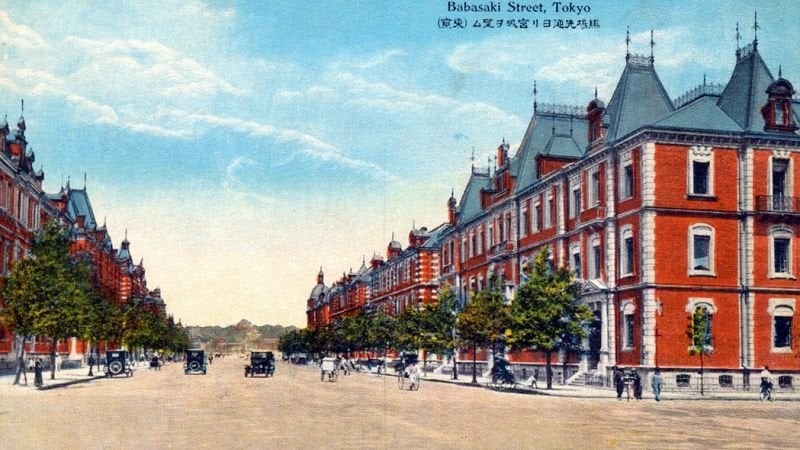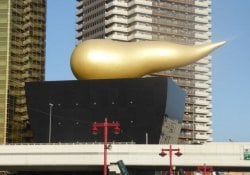Zaibatsu [財閥] is a Japanese term that literally means financial circle and refers to commercial and industrial conglomerates vertically integrated into the Empire of Japan, whose influence and size allowed them to control significant parts of the economy.
You Zaibatsu influenced from the Meiji period to the end of Second World War. Soon they were dissolved by the allied occupation forces and succeeded by the keiretsu (groups of banks, manufacturers, suppliers and distributors.
Índice de Conteúdo
The history of Zaibatsu
The term "zaibatsu” was coined in the 19th century from Sino-Japanese roots zai [財] which means wealth and batsu [閥] which means click or group. Although zaibatsu itself existed, the term was not in common use until after World War I.
By definition, they were large vertical, family-controlled monopolies, consisting of a holding company at the top, with a wholly owned banking subsidiary that provided financing, and several industrial subsidiaries that dominate specific sectors of a market, either exclusively or through several subsidiary companies. .
Companies like Mitsui, Mitsubishi, Sumitomo and Yasuda are the 4 biggest examples of Zaibatsu.
Japan's biggest financial circles
The zaibatsu was the heart of the economic and industrial activity of the Empire of Japan and exerted great influence on Japanese national and foreign policies. They were viewed with suspicion by both the right and the left in the 1920s and 1930s.
the political party Rikken Seiyukai was considered an extension of the Mitsui group, which also had strong connections with the Japanese Imperial Army. Likewise, the Rikken Minseitō was connected to the Mitsubishi group, as well as the Imperial Japanese Navy.
At the start of World War II, only the big four (Mitsubishi, Sumitomo, Yasuda and Mitsui) had direct control over more than 30% of Japan's mining, chemical and metals industries and almost 50% of the machinery and equipment market, a significant part from the foreign commercial fleet and 70% from the commercial stock exchange.
Although the world was experiencing a worldwide economic depression, the zaibatsu were thriving through currency speculation, keeping labor costs low, and military purchases.
Matters came to a head in the March 1932 Blood Incident League with the assassination of Mitsui's managing director, after which the zaibatsu tried to improve its public image through increased charity work.

Zaibatsu list
In the era of the zaibatsu we had the "Big Four” which are the 4 largest and most significant groups. Two of them, Sumitomo and Mitsui, have roots in the Edo period, while Mitsubishi and Yasuda trace their origins to the Edo period. Meiji Restoration.
In Meiji until Shōwa, the government employed its financial powers and expertise for various endeavors, including tax collection, military purchases, and foreign trade.
Aside from the big four, there is a lack of consensus on which companies can be called zaibatsu and which cannot. The initial allowed some public participation of some subsidiary companies, but never of the main holding or subsidiaries.
After the Russo-Japanese War, a number of so-called “second tier” zaibatsu also emerged, mostly as a result of commercial conglomerates and/or the awarding of lucrative military contracts.
The monopolistic business practices of the zaibatsu resulted in a closed circle of companies until the beginning of Japanese industrial expansion on the Asian mainland (Manchukuo) in the 1930s, which allowed the emergence of new groups, including Nissan.
These new zaibatsu differed from the traditional one only in that they were not controlled by specific families and not in terms of business practices. Below we'll see a complete list of all these 1st and 2nd tier groups:
The Big Four:
- Mitsubishi (三菱財閥)
- Mitsui (三井財閥)
- Sumitomo (住友財閥)
- Yasuda (安田財閥)
second layer:
- Asano (浅野財閥)
- Fujita (藤田財閥)
- Furukawa (古河財閥)
- Mori (森コンツェルン)
- Kawasaki (川崎財閥)
- Nakajima Aircraft
- Nichitsu (日窒コンツェルン)
- Nissan (日産コンツェルン)
- In this (日曹コンツェルン)
- Nomura (野村财阀)
- Okura (大倉財閥)
- Riken (理研コンツェルン)
- Shibusawa (渋沢財閥)
- Suzuki shoten (鈴木商店) [bankrupt]

post-war dissolution
The zaibatsu was viewed with some ambivalence by the Japanese military, which nationalized a significant part of its production capacity during World War II. The remaining assets were also heavily damaged by destruction during the war.
Under Allied occupation following Japan's surrender, an attempt was made to dissolve the zaibatsu. Many of the economic advisers were highly suspicious of monopolies and restrictive business practices, which seemed inefficient and undemocratic.
During the occupation of Japan, sixteen zaibatsu were targeted for complete dissolution and another twenty-six for reorganization after dissolution. Among those targeted for dissolution in 1947 were Asano, Furukawa, Nakajima, Nissan, Nomura and Okura.
In addition, Yasuda dissolved in 1946. The assets of the controlling families were confiscated, the companies eliminated and interlinked boards, essential to the old system of coordination between companies, were banned.
The Matsushita Electric Industrial Company (which later became Panasonic), while not a zaibatsu, was also originally targeted for disruption, but was saved by a petition signed by 15,000 of its union workers and families.
However, the complete dissolution of the zaibatsu was never achieved, mainly as the US government rescinded the orders in an effort to re-industrialize Japan as a stronghold against communism in Asia.
The Zaibatsu as a whole was widely considered beneficial to the Japanese economy and government. but all the opinion, bureaucracy and policy change after the second war served as an obstacle that led to his death.

The article is still halfway through, but we recommend also reading:
Zaibatsu Today
Today, the zaibatsu's influence can still be seen in the form of larger financial groups, institutions and companies whose origins go back to the original, often sharing the same family names (eg Sumitomo Mitsui Banking Corporation).
Some argue that the old mechanisms of financial and administrative control used by the zaibatsu have already been destroyed. What we have today are horizontal relationships of association and coordination of the keiretsu [系列] meaning "series" or "subsidiary".
Despite the absence of a sweeping change in the existence of large industrial conglomerates in Japan, the zaibatsu's previous vertically integrated chain of command, ending with a single family, has been largely displaced.
We appreciate your reading. If you liked the article, don't forget to share and leave your comments. The sources for this article can be found at american encyclopedia.







